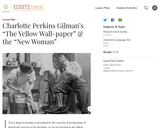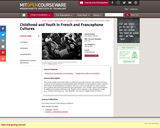
French Vocabulary Audio Clip This/that baby has curly hair
- Subject:
- Arts and Humanities
- Languages
- Material Type:
- Interactive
- Provider:
- Michigan Virtual
- Date Added:
- 04/03/2020

French Vocabulary Audio Clip This/that baby has curly hair

explores Central Vermont's history using 43 historic places that recall past eras when numerous small villages grew slowly until the coming of the railroad, which resulted in a period of rapid growth for Vermont in the last half of the 19th century.

French Vocabulary Audio Clip That'll be all thanks

French Vocabulary Audio Clip These are my parents

French Vocabulary Phrase Audio Clip She is the queen of England

French Vocabulary Phrase Audio Clip He is the Sun King

French Vocabulary Audio Clip This is my cousin (feminine)

French Vocabulary Audio Clip This is my cat

French Vocabulary Audio Clip This is my son

French Vocabulary Audio Clip What is the...?

French Vocabulary Audio Clip It's a big room with a large bed

French Vocabulary Phrase Audio Clip She is a very well known writer

French Vocabulary Audio Clip It's a large corridor with windows and chairs

French Vocabulary Phrase Audio Clip He is a writer

French Vocabulary Audio Clip This/that man has a beard

French Vocabulary Audio Clip This/that man is tall

Using the landmark feminist short story "The Yellow Wall-paper," students will employ close reading concepts to analyze setting, narrative style, symbol, and characterization.

Charlotte Perkins Gilman's story "The Yellow Wall-paper" was written during atime of change. This lesson plan, the first part of a two-part lesson, helps to set the historical, social, cultural, and economic context of Gilman's story.

This course studies the transformation of childhood and youth since the 18th century in France, as well as the development of sentimentality within the family in a francophone context. Students will examine the personification of children, both as a source of inspiration for artistic creation and a political ideal aimed at protecting future generations, and consider various representations of childhood and youth in literature (e.g., Pagnol, Proust, Sarraute, Lave, Morgievre), movies (e.g., Truffaut), and songs (e.g., Brel, Barbara). This course is taught entirely in French.

This course forms the intermediate level of what constitutes a four-term foundation in Mandarin. Upon completion of Chinese III and IV, students should be able to speak Chinese with fluency on everyday topics, reach a literacy level of 700 characters (approximately 2000 common words written in both traditional and simplified characters), read materials in simple standard written Chinese, and produce both orally and in writing short compositions on everyday topics. Throughout the course we will address issues of how cultural differences inform and are informed by different linguistic contexts and practices.